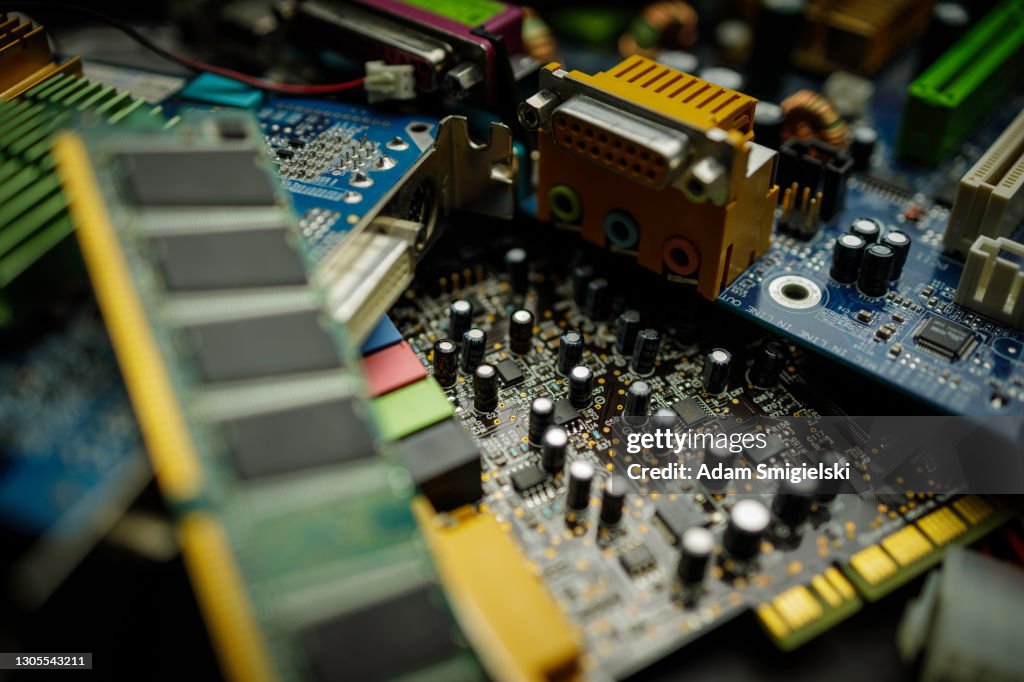In the current fast-paced tech landscape, keeping up with the newest advancements can come at a significant cost. However, savvy surplus computer monitors and budget-conscious consumers are finding a world of opportunities in extra computer components. If you’re constructing a new rig from scratch, improving an existing setup, or simply seeking replacement parts, buying surplus can maximize your tech budget without diminishing quality.
This guide will support you navigate the at times overwhelming market of surplus computer parts. Starting with comprehending what to look for in a used motherboard to ensuring the reliability of surplus RAM, our comprehensive tips and insights will empower you to make wise decisions. We will examine how to recognize genuine components, spot great deals, and ultimately build the best system possible without breaking the bank. Let's dive into the ultimate guide to buying surplus computer parts and discover how to unlock incredible value in your tech journey.
Buying Surplus Technology Components: A Complete Overview
In terms of stretching your digital financial resources, acquiring excess computer parts can be a significant advantage. These items often provide good value, allowing you to enhance or assemble machines without spending a fortune. Nonetheless, navigating the excess market requires insight and a keen insight for quality. Knowing what to look for in these components can mean the difference between a smart purchase and a expensive error.
One of the initial steps in acquiring extra technology components is to get acquainted with the categories and conditions of parts on the market. From circuit boards and CPUs to RAM and power supplies, knowing the specifications you require is crucial. Check ratings and performance benchmarks to make sure you're picking components that will function cohesively efficiently. Researching manufacturers known for reliability can also help you decide confidently.
Another critical aspect of acquiring extra components is checking their condition. Be sure to ask about the prior usage background and protection plan, if available. Request detailed images and details of the parts to spot any significant damage. When possible, examining the parts in person before finalizing a buy can provide additional confidence and help make sure you are receiving the best return for your money.
Key Considerations When Purchasing Second-hand Components
When shopping for pre-owned computer components, the first consideration should be the vendor. Reputable vendors typically offer a warranty or return policy, which ensures peace of mind in case the part does not function as expected. Seek out well-known sellers with positive reviews or endorsements from other technology fans. Additionally, consider checking online platforms and local shops known for selling excess parts. This can help ensure that you are getting reliable components that are less likely to be fake or malfunctioning.
It's also important to evaluate the physical condition of the components before making a purchase. Check for any indicators of wear, such as oxidation, deterioration, or damage. For parts like GPUs and motherboards, check any capacitors that may be protruding or damaged. Testing functionality, if possible, is an great way to ensure the component works correctly. If you are unable to test the item on-site, inquire the seller about their testing process and how they guarantee the working condition of their used parts.
Lastly, compatibility must be thoroughly verified before finalizing a purchase. Ensure that the pre-owned parts you are interested in are compatible for your existing setup in terms of fit with the mainboard, power supply, and other components. Research specifications and seek out user reviews to identify potential problems with compatibility. This careful approach will help in preventing pitfalls errors in setup, ensuring that you maximize the performance and worth of your tech budget.

Examining and Checking Excess Computer Parts
When buying surplus electronic parts, it's essential to confirm that the items you purchase are working and reliable. Begin by carefully inspecting each part for signs of defects, corrosion, or degradation. https://mcguire-houghton-2.hubstack.net/excess-electronics-parts-the-path-to-affordable-enhancements for misaligned contacts on CPUs, fading on circuit boards, and any visible deformations that may imply prior abuse. A comprehensive examination can aid you avoid potential challenges down the road.
Once you have assessed the structural condition, it's time to test the items if possible. For items such as GPUs, mainboards, and power supply units, use testing equipment and software to monitor their capabilities. Running performance tests can indicate how the items handle prolonged use and their heat capacities. Any irregularities during these examinations can signal you to potential breakdowns, enabling you to make well-considered choices.
In conclusion, verifying the suitability of unused items with your existing system is essential. Review specifications and do detailed investigation on component match, particularly for circuit boards and CPUs, as they have specific requirements regarding connectors and supported RAM variations. Knowing what you need and confirming that each unused part works well with your configuration will aid you prevent headaches and maximize your electronic spending effectively.
